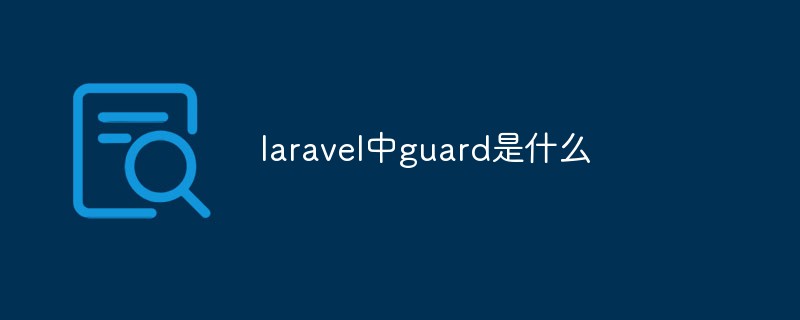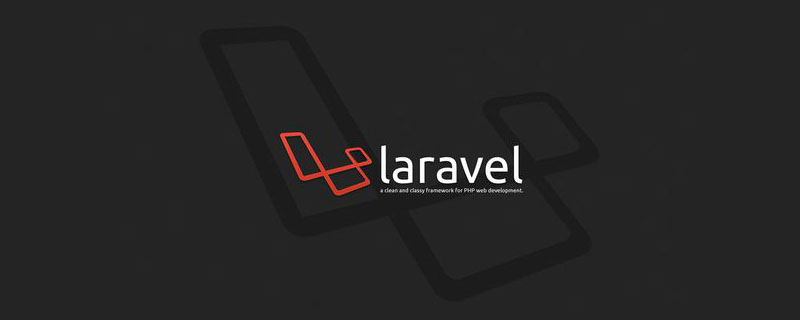 Backend Development
Backend Development PHP Tutorial
PHP Tutorial Implementing the use of Alibaba Cloud ACE cache service in the Laravel framework_PHP tutorial
Implementing the use of Alibaba Cloud ACE cache service in the Laravel framework_PHP tutorialImplementing the use of Alibaba Cloud ACE cache service in the Laravel framework
This article mainly introduces the implementation of using Alibaba Cloud ACE cache service in the Laravel framework. This article extends an ACE cache driver. In order to use Alibaba Cloud ACE cache service, friends who need it can refer to it
I previously wrote an article about using Alibaba Cloud OCS cache in the Laravel 4 framework, which introduced how to extend Laravel 4 to support the Alibaba Cloud OCS cache service that requires SASL authentication. Some netizens asked me how to use ACE's cache in Laravel 4. I originally thought that the same method should be used, but when I tried it myself, I discovered that ACE's cache is very different. So I’ll write another article to introduce how to use Alibaba Cloud ACE’s caching service in the Laravel framework.
How to extend Laravel’s cache driver
When using code like Cache::get($key), Cache::put($key, $value, $minutes) in Laravel 4, you are actually accessing the instantiated IlluminateCacheRepository, so we pass Cache: When the :extend method extends a custom cache driver, it should also return an IlluminateCacheRepository object.
Laravel 4’s built-in Memcached cache driver, the implementation process is as follows:
1. Create a new object of the standard Memcached class
2. Use the Memcached object created in the previous step to create an IlluminateCacheMemecachedStore object that implements the IlluminateCacheStoreInterface interface.
3. Create an IlluminateCacheRepository object using the MemcachedStore object created in the previous step.
So when we extend the custom Cache driver, we choose one of the above steps to customize according to our own situation, and ultimately return the IlluminateCacheRepository object. For example, in the previous article, in the first step, after creating the standard Memcached object, I set the username and password required by OCS through the setSaslAuthData() method. There is no need to customize subsequent steps 2 and 3.
ACE’s caching service
Alibaba Cloud ACE’s caching service is different from the default OCS:
1. Obtain the Cache object through the Alibaba::Cache() method.
2.ACE’s Cache object is different from the standard Memcached object and supports limited methods.
So, what you get in the first step this time is not a standard Memcached object, so you cannot create an IlluminateCacheMemcachedStore object. You need to implement the IlluminateCacheStoreInterface interface yourself.
After the cache space is created in the console, there will be a unique "cache space name", and then the Cache object is obtained through Alibaba::Cache('cache space name'). The following are the steps to implement the ACE cache service driver:
1. In order to facilitate modification, I added a key named ace in the configuration file app/config/cache.php to store the cache space name.
2. Then create an AceMemcachedStore class, which implements the IlluminateCacheStoreInterface interface.
3. Finally, use the AceMemcachedStore object to create the IlluminateCacheRepository object.
Let’s look at the specific code implementation:
Coding to implement a custom ACE cache driver:
The first step is to modify the configuration file. Open app/config/cache.php and add a line at the end:
The code is as follows:
// Specify cache space name
'ace' => 'lblog-cache',
Second step, for convenience, put your own class files in the src/Ace directory and use Ace as the namespace.
1. Create the directory src/Ace in the same level directory of app.
2. Open the composer.json file, modify the autoload section, and use psr-0 or psr-4 under the classmap to automatically load the file.
The code is as follows:
"autoload": {
"classmap": [
// autoload class
],
"psr-4": {
"Ace\": "src/Ace"
}
},
Create the src/Ace/AceMemcachedStore.php file with the following code:
The code is as follows:
namespace Ace;
Use IlluminateCacheStoreInterface;
Use IlluminateCacheTaggableStore;
class AceMemcachedStore extends TaggableStore implements StoreInterface {
protected $memcached;
protected $prefix;
public function __construct($space, $prefix = '') {
$this->memcached = Alibaba::Cache($space);
$this->prefix = strlen($prefix) > 0 ? $prefix.':' : '';
}
/**
* Retrieve an item from the cache by key.
*
* @param string $key
* @return mixed
*/
public function get($key)
{
$value = $this->memcached->get($this->prefix.$key);
if(is_bool($value) && $value === false) {
return null;
}
return $value;
}
/**
* Store an item in the cache for a given number of minutes.
*
* @param string $key
* @param mixed $value
* @param int $minutes
* @return boolean
*/
public function put($key, $value, $minutes)
{
return $this->memcached->set($this->prefix.$key, $value, $minutes);
}
/**
* Increment the value of an item in the cache.
*
* @param string $key
* @param mixed $value
* @return boolean
*/
public function increment($key, $value = 1)
{
return $this->memcached->increment($this->prefix.$key, $value);
}
/**
* Decrement the value of an item in the cache.
*
* @param string $key
* @param mixed $value
* @return boolean
*/
public function decrement($key, $value = 1)
{
return $this->memcached->decrement($this->prefix.$key, $value);
}
/**
* Store an item in the cache indefinitely.
*
* @param string $key
* @param mixed $value
* @return boolean
*/
public function forever($key, $value)
{
return $this->memcached->set($key, $value, 0);
}
/**
* Remove an item from the cache.
*
* @param string $key
* @return boolean
*/
public function forget($key)
{
return $this->memcached->delete($this->prefix.$key);
}
/**
* Remove all items from the cache.
*
* @return void
*/
public function flush()
{
//$this->memcached->flush();
return false;
}
public function getMemcached()
{
return $this->memcached;
}
/**
* Get the cache key prefix.
*
* @return string
*/
public function getPrefix()
{
return $this->prefix;
}
}
这段代码比较简单,不过要特别注意一下 get($key) 方法的实现。标准 memcached 以及 ACE 的缓存对象的 get 方法都是key有效时返回对应的缓存值,否则返回false,而在 Laravel 4 中,是通过检测 get 方法返回的是否 null 来做判断,所以这里需要处理一下,返回缓存值或者null。
AceMemcachedStore类已经创建好了,接下来在 bootstrap/start.php 文件中扩展 Cache:
打开 bootstrap/start.php, 添加以下代码:
代码如下:
// 扩展名为 ace 的缓存驱动
Cache::extend('ace', function($app)
{
// 从 app/config/cache.php 文件中读取 "ace" 的值
$space = $app['config']['cache.ace'];
// 从 app/config/cache.php 文件中读取 "prefix" 的值
$prefix = $app['config']['cache.prefix'];
// 创建 AceAceMemcachedStore 对象
$store = new AceAceMemcachedStore($space, $prefix);
// 创建并返回 IlluminateCacheRepository 对象
return new IlluminateCacheRepository($store);
});
指定系统使用 'ace' 作为缓存驱动:打开 app/config/cache.php,找到 'driver' => '...' 所在行,修改为:'driver' => 'ace'.
使用和限制
通过以上操作,就可以在 Laravel 4 中调用 ACE 的缓存服务,使用上与平常的用法完全一致,比如:
代码如下:
// 添加缓存,有效时间10分钟
Cache::put('my_key', 'my value', 10);
// 读取缓存
Cache::get('my_key')
// 判断缓存是否存在
Cache::has('my_key')
// 数据查询缓存
$users = DB::table('users')->remember(10)->get();
但是由于 ACE 缓存对象本身的限制,只能删除指定 key 的缓存对象,不能遍历、全量操作,因此 Cache::flush() 方法就不能使用。在上面的 AceMemcachedStore 对象中,flush 方法没有做任何操作,只是返回 false.
 laravel单点登录方法详解Jun 15, 2022 am 11:45 AM
laravel单点登录方法详解Jun 15, 2022 am 11:45 AM本篇文章给大家带来了关于laravel的相关知识,其中主要介绍了关于单点登录的相关问题,单点登录是指在多个应用系统中,用户只需要登录一次就可以访问所有相互信任的应用系统,下面一起来看一下,希望对大家有帮助。
 一起来聊聊Laravel的生命周期Apr 25, 2022 pm 12:04 PM
一起来聊聊Laravel的生命周期Apr 25, 2022 pm 12:04 PM本篇文章给大家带来了关于laravel的相关知识,其中主要介绍了关于Laravel的生命周期相关问题,Laravel 的生命周期从public\index.php开始,从public\index.php结束,希望对大家有帮助。
 laravel中guard是什么Jun 02, 2022 pm 05:54 PM
laravel中guard是什么Jun 02, 2022 pm 05:54 PM在laravel中,guard是一个用于用户认证的插件;guard的作用就是处理认证判断每一个请求,从数据库中读取数据和用户输入的对比,调用是否登录过或者允许通过的,并且Guard能非常灵活的构建一套自己的认证体系。
 laravel中asset()方法怎么用Jun 02, 2022 pm 04:55 PM
laravel中asset()方法怎么用Jun 02, 2022 pm 04:55 PMlaravel中asset()方法的用法:1、用于引入静态文件,语法为“src="{{asset(‘需要引入的文件路径’)}}"”;2、用于给当前请求的scheme前端资源生成一个url,语法为“$url = asset('前端资源')”。
 实例详解laravel使用中间件记录用户请求日志Apr 26, 2022 am 11:53 AM
实例详解laravel使用中间件记录用户请求日志Apr 26, 2022 am 11:53 AM本篇文章给大家带来了关于laravel的相关知识,其中主要介绍了关于使用中间件记录用户请求日志的相关问题,包括了创建中间件、注册中间件、记录用户访问等等内容,下面一起来看一下,希望对大家有帮助。
 laravel中间件基础详解May 18, 2022 am 11:46 AM
laravel中间件基础详解May 18, 2022 am 11:46 AM本篇文章给大家带来了关于laravel的相关知识,其中主要介绍了关于中间件的相关问题,包括了什么是中间件、自定义中间件等等,中间件为过滤进入应用的 HTTP 请求提供了一套便利的机制,下面一起来看一下,希望对大家有帮助。
 laravel的fill方法怎么用Jun 06, 2022 pm 03:33 PM
laravel的fill方法怎么用Jun 06, 2022 pm 03:33 PM在laravel中,fill方法是一个给Eloquent实例赋值属性的方法,该方法可以理解为用于过滤前端传输过来的与模型中对应的多余字段;当调用该方法时,会先去检测当前Model的状态,根据fillable数组的设置,Model会处于不同的状态。
 laravel路由文件在哪个目录里Apr 28, 2022 pm 01:07 PM
laravel路由文件在哪个目录里Apr 28, 2022 pm 01:07 PMlaravel路由文件在“routes”目录里。Laravel中所有的路由文件定义在routes目录下,它里面的内容会自动被框架加载;该目录下默认有四个路由文件用于给不同的入口使用:web.php、api.php、console.php等。


Hot AI Tools

Undresser.AI Undress
AI-powered app for creating realistic nude photos

AI Clothes Remover
Online AI tool for removing clothes from photos.

Undress AI Tool
Undress images for free

Clothoff.io
AI clothes remover

AI Hentai Generator
Generate AI Hentai for free.

Hot Article

Hot Tools

SublimeText3 Chinese version
Chinese version, very easy to use

mPDF
mPDF is a PHP library that can generate PDF files from UTF-8 encoded HTML. The original author, Ian Back, wrote mPDF to output PDF files "on the fly" from his website and handle different languages. It is slower than original scripts like HTML2FPDF and produces larger files when using Unicode fonts, but supports CSS styles etc. and has a lot of enhancements. Supports almost all languages, including RTL (Arabic and Hebrew) and CJK (Chinese, Japanese and Korean). Supports nested block-level elements (such as P, DIV),

ZendStudio 13.5.1 Mac
Powerful PHP integrated development environment

Atom editor mac version download
The most popular open source editor

EditPlus Chinese cracked version
Small size, syntax highlighting, does not support code prompt function






